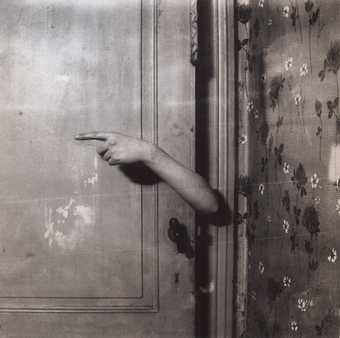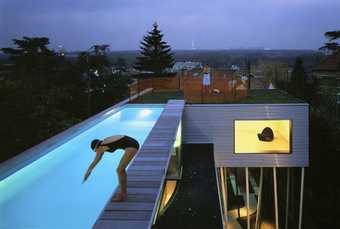Surreal gives a rich and engaging account of the imagery inspired by surrealism and the reverberating impact on a range of art forms. Originating from Europe, surrealism has influenced contemporary art on a global scale, giving rise to a new logic of questioning, a fascination with disrupted order and violated objects, exposing an ‘unstable world’ through challenging the predetermined defines.
Containing a selection of short essays by art historians and critics including Mary Ann Caws, Brian Dillon, Krysztof Fijalkowski and Dalibor Vesely, Surreal traces how the art movement has shaped modern aesthetics and imagination, opening up a new way in approaching reality.
Instead of a chronological or historical approach, the book features thematic if somewhat brief chapters on how the surrealist-inspired imagination is evident in different art forms, evoking, among others, the comic surreal-in-life imageries in films. For instance, the book engages with Czech surrealist Jan Švankmajer’s film Down to the Cellar, a stark fable about a little girl’s venture to the cellar to collect a basket of potatoes, only to realise that the potatoes are haunted and refused to be moved. The film creates powerful juxtapositions between a child’s strange encounters (haunted, morbid-looking potatoes) with the disturbingly familiar domestic settings (the cellar). One should bear in mind that his films were already seen as controversial in the 1970s, and the artist was banned by the communist authorities from making more films.
As a sequel to the Barbican show, Surreal engages with surrealism-inspired contemporary art as much as the works of the first surrealists in 1920s. An example is the wax sculpture made by the Italian artist Maurizio Cattelan, Charlie Don’t Surf, uses the innocent child figure to expose the terror of man’s imagination. Named after a great line from Francis Coppola’s film on the Vietnam war Apocalypse Now, Cattelan’s artpiece features a hooded child facing away. Seated at his desk and with his head lowered as if fully absorbed in his homework, the viewer can only see, upon closer examination, that the child’s two hands are stabbed by pencils, a brutal imagery that evokes the invisible presence of a violent mother and her acts. The combined use of sculpture and perspectives is highly skilful, leading one to question stereotypes of the domestic space.
A volume dedicated to the Barbican’s The Surreal House exhibition, here surrealism takes on the language of a haunted house, focusing on the corporeal and phantasmagoria, while historical context for the surreal imagination is less explored. The black and white photography by Frances Woodman and Paul Nougé’s La Subversion des Images contained in the book are revealing in that they highlight the strangeness of home and one’s dialogue with the domestic space. An American photographer known for her ethereal images, Francesca Woodman ’s work contains the recurrent motif of a derelict house and a lone, ghost-like woman exhibiting strange postures in that space: trapped between the wall and a mantelpiece; hanging mid-air with her hands glued to the ceiling; or hidden away in a glass cabinet filled with animal specimens. A poet and theorist in the Belgian surrealist group whose work has influenced Magritte’s paintings, Paul Nougé’s photographs highlight the strangeness of home, embodied in images such as a limb seeming to grow out of a door; a woman asleep on a mantelpiece; or old shirts flying out of a trunk. Brian Dillon’s essay, ‘An Approach to the Interior’, outlines in detail how artists make use of the salon, furniture items, ruins, atmosphere and even dust to evoke a surreal mood or dreamscape.

Paul Nougé
Le bras révélateur from Subversion des images 1929–30
It is refreshing to see that architecture has been included as an art form to assess surrealism’s impact. In Jane Alison’s essay ‘The Surreal House’, Le Corbusier’s La Villa Savoye and OMA’s Villa Dall’Ava are cited. OMA’s Villa Dall’Ava, was built by OMA and Rem Koolhas for the architecture journalist Dominique Boudet and his wife. The iconic villa features a surreal rooftop swimming pool. The house rests on long, thin stilts which Alison compares to the crutches that support the surreal, slumbering mind in Dali’s painting Sleep. On the other hand, often regarded as an illustrative example of the ‘Five Points of Architecture’ and a break-through in modern architecture, Le Corbusier’s La Villa Savoye is a minimalist house built on pilotis, complete with a flat roof, a free open plan and a liberating facade, as well as horizontal strip windows. Read in this context, one becomes aware of the subtle, surreal qualities inherent in the modern style of La Villa Savoye.
The book’s engagement with the works of contemporary artists such as Rebecca Horn, Rachel Whiteread, Sarah Lucas and Maurizio Cattelan are informative and inspiring. This contemporary take on surrealism opens up a new dimension in understanding the subject that goes far beyond Breton’s Surrealist Manifesto and the surrealists of the 1920s.
For those keen to study the historical and stylistic contexts for individual artworks, there is a helpful checklist on exhibited works at the end of the book that offers detailed background. The annotations also form part of an exciting thematic dialogue between artpieces from different periods. In fact, one wonders why the annotations could not be assimilated readily into the main text to complete the narrative.

